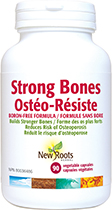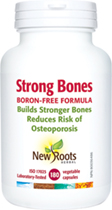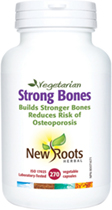The Importance of Staying Active as You Age
As we enter our 40s, 50s, and 60s, we notice that we may start to slow down a little bit, spending less time being active and more time recovering when we do exert ourselves. While aging is inevitable, you do not have to sideline yourself just because you aren’t as young as you used to be. By staying active, you may even be able to slow the aging process and protect yourself from age-related illness or injury.
In Canada, cardiovascular disease is the second leading cause of death, with almost 93,000 Canadians over the age of 40 being diagnosed each year[1]. Diabetes is also widely prevalent in Canada, with about 1 in 10 adults living with this condition.[2] The likelihood of being diagnosed with either of these conditions increases with age but can effectively be prevented and managed through diet and physical activity. Osteoporosis—a condition characterized by weakened bones—is also commonly associated with aging, and is usually diagnosed after 40 years of age, more commonly in women.[3] While many physical conditions become more prevalent with aging, cognitive health should not be forgotten. In Canada, the onset of dementia more than doubles every five years after the age of 65.[4] Maintaining physical activity is not just important for your body, but it is also imperative for mental wellbeing and for long-term quality of life.
Whether you are an avid runner or simply enjoy zumba classes with friends, aerobic activity can help keep you healthy, but science shows that resistance training becomes more important as we age. Resistance exercise is basically using your muscles against a force or weight, even your own body weight. The benefits of resistance exercise include supporting muscle mass and preventing the breakdown of muscles, as well as preventing the decline in bone density.[5] On average, your muscle mass will decrease by 3–8% each year of your adult life; in this case the saying “use it or lose it” rings true.[6] So, by challenging your muscles with resistance exercise, you can prevent this loss and even build more muscle.[7]
When there are forces acting on your bones, they respond by building more bone and, therefore, strengthening their structure.[8] This is an important step in the prevention of osteoporosis and can easily be attained with resistance exercise.
Aerobic exercise, especially when done regularly, can reduce the risk of both cardiovascular disease and diabetes.[9], [10] It has also been shown to reduce the risk of dementia by improving cognitive function and even increasing the size of the area of the brain that creates memories, the hippocampus.[11] What does this mean? Ideally, you should be aiming to get 150 minutes of moderate aerobic activity each week, plus two sessions of strength-training involving the major muscle groups: chest, back, arms and shoulders, abdominals, legs, and buttocks.[12]
We know why staying active is important. Let’s also look at how to nourish your body; to not only stay active, but to feel good doing it, and maybe even beat last year’s personal best.
If you feel like you just don’t have the energy to incorporate movement into your day, the first place you should look is your diet. With age, people tend to eat less food and fewer nutrients in general, with a shift towards consuming more simple carbohydrates such as baked goods. This is likely due to a decreased metabolic rate and slower movement of food through the digestive tract.[13] When you are not getting adequate nutrients, this can result in decreased energy and, therefore, you are less likely to exercise and perform well when you do. To combat this, it is important to eat a diet filled with whole foods, including a variety of vegetables and protein with each meal.
Protein can prevent the yearly muscle loss that is often seen with age and allow you to maintain or build strength.[14] When combined with strength-training, protein can help improve strength and aid in postexercise muscle recovery. This leads to improve athletic performance.[15]
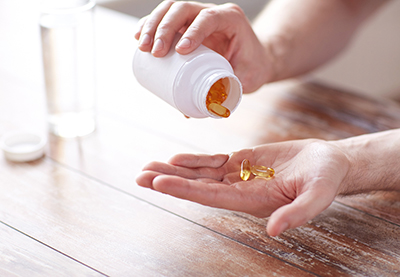 To maintain bone health and prevent osteoporosis, we need calcium—which is plentiful in dairy and leafy greens—as well as vitamin D—which is found in fish or fortified foods.[16] Vitamin D is crucial for helping the body absorb calcium and may be hard to get enough of.[17] While we can make biologically active vitamin D3 in our skin with exposure to sunlight, we also need to be cautious and protect ourselves from the possibly damaging effects of too much sunlight. Health Canada recommends that anyone over 50 should supplement with vitamin D3.[18] Speak with your health-care provider to determine the correct amount for you.
To maintain bone health and prevent osteoporosis, we need calcium—which is plentiful in dairy and leafy greens—as well as vitamin D—which is found in fish or fortified foods.[16] Vitamin D is crucial for helping the body absorb calcium and may be hard to get enough of.[17] While we can make biologically active vitamin D3 in our skin with exposure to sunlight, we also need to be cautious and protect ourselves from the possibly damaging effects of too much sunlight. Health Canada recommends that anyone over 50 should supplement with vitamin D3.[18] Speak with your health-care provider to determine the correct amount for you.
Another important vitamin for energy is vitamin B12, which is mainly found in animal products. B12 is essential for blood- and nerve-cell health. If you have a deficiency, it can lead to a lack of energy, numbness or tingling, poor memory, and even trouble with balance.[19] People will often notice a quick improvement in their energy levels with supplementation.
 As we head into our 50s, it is more likely that we will have a reduced ability to absorb certain vitamins and nutrients, including vitamin B12 and calcium.[20] Supplementing with these micronutrients can not only help to prevent age-related diseases, but it can also provide higher levels of energy.
As we head into our 50s, it is more likely that we will have a reduced ability to absorb certain vitamins and nutrients, including vitamin B12 and calcium.[20] Supplementing with these micronutrients can not only help to prevent age-related diseases, but it can also provide higher levels of energy.
Supporting and maintaining an active lifestyle is important for long-term health, prevention of age-related diseases, and upholding your fitness level regardless of age. Whether you’re an avid athlete or have never participated in sport, now is the time to get moving!
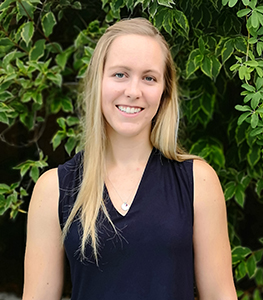 Dr. Kaitlyn Richardson, ND, HbSc
Dr. Kaitlyn Richardson, ND, HbSc
A naturopathic doctor in Milton, Ontario, with a clinical focus in sports and performance medicine, she believes in using individualized, holistic, and evidence-based strategies to help active individuals feel and perform their best.
drkaitlynrichardson.com
References
[1] [No author listed.] “Heart disease in Canada.” Canada.ca · https://www.canada.ca/en/public-health/services/publications/diseases-conditions/heart-disease-canada.html · Updated 2017-02-10.
[2] [No author listed.] “Diabetes in Canada.” Canada.ca · https://www.canada.ca/en/public-health/services/publications/diseases-conditions/diabetes-canada-highlights-chronic-disease-surveillance-system.html · Updated 2020-08-17.
[3] [No author listed.] “Osteoporosis.” Canada.ca · https://www.canada.ca/en/public-health/services/chronic-diseases/osteoporosis.html · Updated 2021-07-21.
[4] [No author listed.] “Dementia in Canada: Summary.” Canadian Institute for Health Information · https://www.cihi.ca/en/dementia-in-canada/dementia-in-canada-summary · Accessed 2022-01-24.
[5] Hong, A.R., and S.W. Kim. “Effects of resistance exercise on bone health.” Endocrinology and Metabolism, Vol. 33, No. 4 (2018): 435–444.
[6] English, K.L., and D. Paddon-Jones. “Protecting muscle mass and function in older adults during bed rest.” Current Opinion in Clinical Nutrition and Metabolic Care, Vol. 13, No. 1 (2010): 34–39.
[7] English and Paddon-Jones. “Protecting muscle mass and function.”
[8] Hong and Kim. “Effects of resistance exercise on bone health.”
[9] Kubota, Y., K.R. Evenson, R.F. Maclehose, N.S. Roetker, C.E. Joshu, and A.R. Folsum. “Physical activity and lifetime risk of cardiovascular disease and cancer.” Medicine & Science in Sports & Exercise, Vol. 49, No. 8 (2017): 1599–1605.
[10] Hamasaki, H. “Daily physical activity and type 2 diabetes: A review.” World Journal of Diabetes, Vol. 7, No. 12 (2016): 243–251.
[11] Ahlskog, J.E., Y.E. Geda, N.R. Graff-Radford, and R.C. Petersen. “Physical exercise as a preventive or disease-modifying treatment of dementia and brain aging.” Mayo Clinic Proceedings, Vol. 86, No. 9 (2011): 876–884.
[12] [No author listed.] “Physical activity.” World Health Organization · https://www.who.int/news-room/fact-sheets/detail/physical-activity · Published 2020-11-26. Accessed 2022-01-24.
[13] Drewnowski, A., and J.M. Shultz. “Impact of aging on eating behaviors, food choices, nutrition, and health status.” The Journal of Nutrition, Health & Aging, Vol. 5, No. 2 (2001): 75–79.
[14] Houston, D.K., B.J. Nicklas, J. Ding, T.B. Harris, F.A. Tylavsky, A.B. Newman, J.S. Lee, N.R. Sahyoun, M. Visser, and S.B. Kritchevsky. “Dietary protein intake is associated with lean mass change in older, community-dwelling adults: The Health, Aging, and Body Composition (Health ABC) Study.” The American Journal of Clinical Nutrition, Vol. 87, No. 1 (2008): 150–155.
[15] Carbone, J.W., and S.M. Pasiakos. “Dietary protein and muscle mass: Translating science to application and health benefit.” Nutrients, Vol. 11, No. 5 (2019): 1136.
[16] “Osteoporosis.” Canada.ca. op. cit.
[17] “Osteoporosis.” Canada.ca. op. cit.
[18] “Osteoporosis.” Canada.ca. op. cit.

 Stores
Stores
